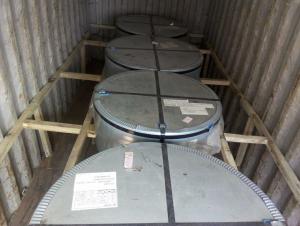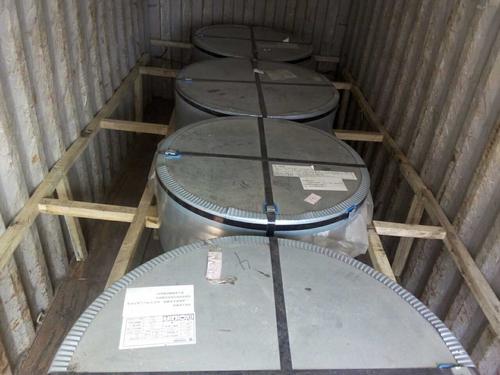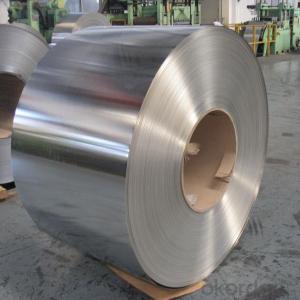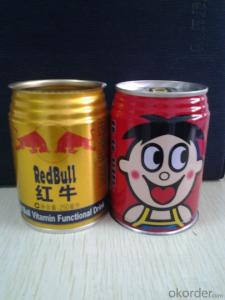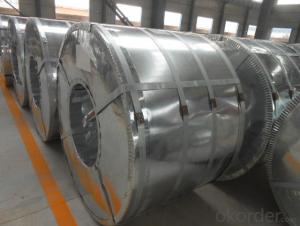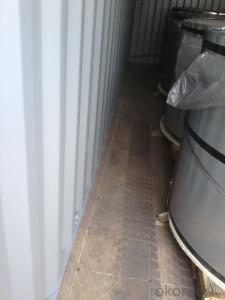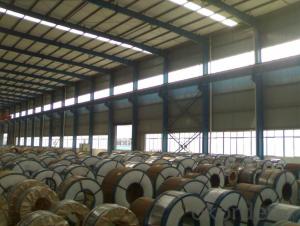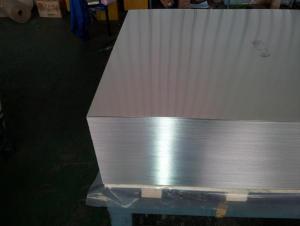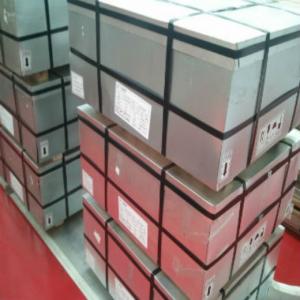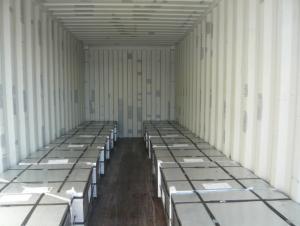Tinplate Coils
- Loading Port:
- China Main Port
- Payment Terms:
- TT OR LC
- Min Order Qty:
- -
- Supply Capability:
- -
OKorder Service Pledge
OKorder Financial Service
You Might Also Like
Tinplate is a thin steel sheet coated by tin. It has an extremely beautiful metallic luster as well as excellent properties in corrosion resistance, solder ability, and weld ability.
Tinplate is widely used for making all types of containers such as food cans, beverage cans, and artistic cans, tea cans, painting cans, chemical package cans and dry food package cans, metal printing etc. Its applications are not limited to containers; recently, tinplate has also been used for making electrical machinery parts and many other products.
Our Tinplates Specification:
Standard: ISO 11949 -1995, GB/T2520-2000,JIS G3303,ASTM A623, BS EN 10202
Material: MR,SPCC
Thickness:0.15mm - 0.50mm
Width: 600mm -1150mm
Temper: T1-T5
Annealing: BA & CA
- Q: Can tinplate be used for packaging industrial products?
- Yes, tinplate can be used for packaging industrial products. Tinplate is a type of steel coated with a thin layer of tin, which makes it highly resistant to corrosion and provides a protective barrier for the packaged products. It is commonly used for packaging industrial products such as chemicals, paints, oils, and other materials that require a durable and secure packaging solution.
- Q: What are the cost considerations of using tinplate packaging?
- The cost considerations of using tinplate packaging include the price of the raw materials, production expenses, transportation costs, and potential waste management expenses. Additionally, the durability and reusability of tinplate packaging should be considered as they can impact long-term costs.
- Q: What are the main considerations for choosing tinplate suppliers?
- The main considerations for choosing tinplate suppliers include the quality of their products, their pricing and pricing structure, their production capacity and lead times, their ability to meet specific requirements and customizations, their reputation and reliability, their customer service and support, and their sustainability and ethical practices.
- Q: What are the different types of tinplate lamination?
- There are primarily two types of tinplate lamination: single-sided lamination and double-sided lamination. In single-sided lamination, only one side of the tinplate is laminated with a protective layer, typically made of a polymer or lacquer. On the other hand, double-sided lamination involves laminating both sides of the tinplate, providing enhanced protection and barrier properties.
- Q: How does tinplate affect the taste and quality of food?
- Tinplate is commonly used in the packaging of food due to its protective properties. It acts as a barrier against air, moisture, and light, preventing contamination and spoilage of the product. However, tinplate can potentially affect the taste and quality of food if there is any interaction between the metal and the food. This can occur when acidic or salty foods come into contact with the tin coating, leading to a metallic taste. To prevent such issues, tin coatings are often lined with a layer of enamel or lacquer to create a barrier between the food and the metal. Additionally, strict regulations and quality control measures are in place to ensure that tinplate used in food packaging is safe and does not compromise the taste or quality of the food.
- Q: Can tinplate packaging be used for promotional items?
- Yes, tinplate packaging can be used for promotional items. Tinplate packaging offers a durable and visually appealing option, making it suitable for promotional purposes. It can be customized with branding and designs, making it an effective tool to enhance brand visibility and create a lasting impression among recipients.
- Q: What is the process for printing on tinplate?
- The process for printing on tinplate typically involves several steps. First, the tinplate sheets are cleaned and coated with a layer of primer to ensure proper adhesion of the ink. Then, the desired design or artwork is printed onto the tinplate using specialized printing techniques such as lithography or offset printing. After the printing is complete, the tinplate is usually coated with a protective varnish or lacquer to enhance its durability and resistance to corrosion. The printed tinplate sheets can then be further processed into various products, such as tin cans or decorative tin containers.
- Q: How does tinplate ensure the freshness of pet food?
- Tinplate ensures the freshness of pet food by providing an airtight and durable packaging solution. This material is highly resistant to corrosion and helps to prevent external factors such as moisture, light, and oxygen from entering the packaging and spoiling the food. Additionally, tinplate offers a long shelf life for pet food, preserving its nutritional value and flavor until it is consumed by pets.
- Q: What are the main applications of tinplate in the beverage industry?
- Tinplate is commonly used in the beverage industry for the production of cans and containers. Its main applications include packaging for carbonated drinks, beer, fruit juices, and other beverages. Tinplate provides excellent protection against corrosion, ensuring the freshness and quality of the product. It also offers high strength, easy formability, and good printability, making it an ideal choice for branding and product differentiation. Moreover, tinplate cans are easily recyclable, contributing to sustainability efforts in the industry.
- Q: How does tinplate perform in terms of durability and longevity?
- Tinplate is known for its exceptional durability and longevity. Its protective tin coating acts as a barrier against corrosion and prevents the underlying steel from rusting. This makes tinplate highly resistant to environmental factors and ensures its long-lasting performance even in challenging conditions. Additionally, tinplate's strength and rigidity contribute to its durability, making it suitable for various applications where longevity is crucial.
Send your message to us
Tinplate Coils
- Loading Port:
- China Main Port
- Payment Terms:
- TT OR LC
- Min Order Qty:
- -
- Supply Capability:
- -
OKorder Service Pledge
OKorder Financial Service
Similar products
Hot products
Hot Searches
Related keywords
